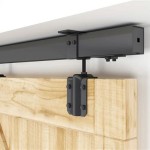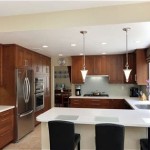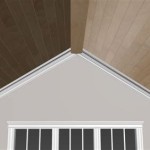A Guide To Choosing The Right Ceiling Wine Rack System
Ceiling wine racks offer an elegant and space-saving solution for wine storage, transforming unused overhead areas into striking displays and functional storage spaces. Selecting the appropriate ceiling wine rack system requires careful consideration of various factors, including the available space, aesthetic preferences, the size of the wine collection, and the structural integrity of the ceiling itself. This guide provides a comprehensive overview of the elements involved in choosing the right ceiling wine rack system to ensure optimal storage and visual appeal.
Before embarking on the selection process, a thorough assessment of the intended installation area is crucial. Measure the length, width, and height of the space to determine the maximum dimensions of the rack. Consider any obstructions, such as light fixtures, pipes, or ductwork, that may interfere with the installation. Furthermore, analyze the structural capacity of the ceiling. Different ceiling types, such as drywall, concrete, or wood, have varying weight-bearing capabilities. Consult with a structural engineer or experienced contractor to verify the ceiling's load-bearing capacity and ensure that it can safely support the weight of the wine rack and the bottles it will hold.
The aesthetic integration of the wine rack with the existing décor is paramount. The style, material, and finish of the rack should complement the overall design of the room. Consider the color palette, architectural details, and furniture styles to create a cohesive and visually appealing environment. A wide range of materials are available, including metal, wood, and glass, each offering a unique aesthetic. Metal racks often provide a modern and industrial look, while wood racks offer a more traditional and rustic feel. Glass racks can create a sleek and contemporary appearance. The finish of the rack should also be carefully selected to match or contrast with other elements in the room. Options include brushed nickel, matte black, polished chrome, and various wood stains.
The capacity and configuration of the wine rack should be tailored to the size and composition of the wine collection. Determine the total number of bottles to be stored and the types of wines to be accommodated. Some racks are designed to hold standard-sized bottles, while others can accommodate larger formats, such as magnums or sparkling wine bottles. Consider the spacing between bottles to ensure adequate airflow and prevent overcrowding. Different rack configurations are available, including single-bottle racks, multi-bottle racks, and racks with adjustable shelves. Choose a configuration that maximizes space utilization and allows for easy access to the wines.
Analyzing Space and Structural Considerations
The available space is the primary determinant of the size and shape of the ceiling wine rack. Accurately measure the area where the rack will be installed, paying attention to both horizontal and vertical dimensions. Consider the height of the ceiling and the desired clearance between the bottom of the rack and the floor or countertop. Ensure that there is sufficient headroom for comfortable movement and access to the wines. If the space is limited, opt for a more compact rack design that maximizes vertical storage. In larger spaces, consider a more expansive rack that can accommodate a larger collection and create a dramatic visual statement.
The structural integrity of the ceiling is crucial for ensuring the safety and stability of the wine rack. Different ceiling types have varying load-bearing capacities. Drywall ceilings are generally not designed to support heavy loads and may require additional reinforcement. Concrete ceilings are typically stronger and can support heavier racks, but special anchoring techniques may be necessary. Wood ceilings offer a good balance of strength and ease of installation. Consult with a structural engineer or experienced contractor to assess the ceiling's load-bearing capacity and determine the appropriate installation methods. Ensure that the rack is securely anchored to the ceiling joists or structural supports to prevent it from collapsing under the weight of the wine bottles. Using the correct anchors and fasteners, designed specifically for the ceiling material, is also paramount to a successful and safe installation.
Beyond weight, consider vibrations that might be present in the area. If the ceiling is near a busy road or machinery, vibrations could disturb the wine. While not typically a major concern, taking steps to mitigate vibration, such as using rubber washers or vibration-dampening mounts, can offer extra assurance, particularly for wines intended for long-term aging.
Understanding Wine Rack Materials and Aesthetics
The choice of materials significantly impacts the aesthetic appeal and durability of the ceiling wine rack. Metal racks, often constructed from steel or aluminum, offer a modern and industrial look. They are typically durable and resistant to corrosion, making them suitable for various environments. Metal racks can be finished in a variety of colors and textures, allowing for customization to match the existing décor. Wood racks, crafted from hardwoods such as oak, walnut, or maple, provide a more traditional and rustic feel. Wood racks can be stained or painted to complement the surrounding furniture and architectural details. Glass racks, often made from tempered glass, create a sleek and contemporary appearance. Glass racks can be combined with metal or wood frames to add visual interest and structural support.
The aesthetic integration of the wine rack with the existing décor is essential for creating a cohesive and visually appealing environment. Consider the color palette, architectural details, and furniture styles when selecting the style, material, and finish of the rack. A minimalist design with clean lines and a neutral finish may be appropriate for a modern space, while a more ornate design with intricate carvings and a rich wood stain may be suitable for a traditional space. The lighting in the room can also influence the perceived color and texture of the rack. Experiment with different lighting options to enhance the visual appeal of the rack and showcase the wine collection.
Don't underestimate the power of complementary hardware and accessories. Consider the finish of the support chains or rods used to suspend the rack. Think about adding subtle integrated lighting to spotlight your wine collection, or even decorative elements like grapevine accents or bottle stoppers displayed alongside the rack. These details can elevate the overall design and create a truly personalized statement.
Evaluating Capacity, Configuration, and Accessibility
The capacity of the wine rack should be determined by the size of the wine collection and the anticipated future growth. Choose a rack that can accommodate the current number of bottles and provide sufficient space for additional acquisitions. Consider the types of wines to be stored and the sizes of the bottles. Some racks are designed to hold standard-sized bottles, while others can accommodate larger formats, such as magnums or sparkling wine bottles. Ensure that the spacing between bottles is adequate to allow for proper airflow and prevent overcrowding. Overcrowding can hinder access to specific bottles and increase the risk of breakage.
The configuration of the wine rack should be optimized for space utilization and ease of access. Different rack configurations are available, including single-bottle racks, multi-bottle racks, and racks with adjustable shelves. Single-bottle racks allow for individual bottle display and easy access to specific wines. Multi-bottle racks offer a more compact storage solution for larger collections. Racks with adjustable shelves provide flexibility to accommodate bottles of different sizes and shapes. Consider the orientation of the bottles when selecting a rack configuration. Bottles can be stored horizontally, vertically, or at an angle. Horizontal storage is generally preferred for long-term aging, as it keeps the cork moist and prevents it from drying out and shrinking. Vertical storage is suitable for wines that are intended for short-term consumption. Angled storage can provide a visually appealing display and facilitate easy access to the labels.
Accessibility is another critical factor to consider. The rack should be positioned in a location that is easily accessible and does not obstruct traffic flow. Ensure that there is sufficient clearance around the rack to allow for comfortable access to the wines. Consider the height of the rack and the reach required to retrieve bottles. If the rack is positioned high above the floor, a step stool or ladder may be necessary. The design of the rack should also facilitate easy identification of the wines. Labeling or indexing the bottles can help to locate specific vintages quickly and efficiently. Also, take into account the difficulty in adding or removing bottles once the rack is fully loaded. Some racks require partially unloading to access bottles in the higher rows, while others have a design that facilitates individual bottle access.

3 Wine Storage Design Tips For Style Function Cornerstone Custom Construction Home Builder Lake Mary Fl
Wine Cellar Guide

Wine Racks Cellar Racking Enthusiast

Wine Cellar Guide For Diyers From Vino Grotto

Wine Cellar Guide For Diyers From Vino Grotto

Wine Cellar Ideas

4 Best Lighting Choices For Your Wine Cellar Our Top Picks Winecellarhq Com

Wine Racks Cellar Racking Enthusiast

A Practical Guide To Constructing Wine Cellar Racks America

Wine Racks Cellar Racking Enthusiast
Related Posts








